New evidence on IRA/Nazi links
Published in 20th-century / Contemporary History, Features, Issue 2(March/April 2011), The Emergency, Volume 19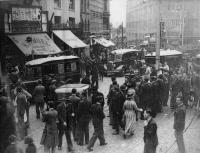
Crowds gather at the scene of the IRA ‘bike bomb’ (inset) that killed five people in Broadgate, Coventry’s main shopping street, on 25 August 1939. (UK National Archives and Coventry Police Museum)
The first direct talks between the IRA and the Nazis began in 1937, when Tom Barry, the then chief-of-staff, travelled to Germany. The legendary leader of the Cork flying columns was accompanied on his travels by a German agent, Jupp Hoven. While posing as a TCD student, Hoven undertook spying work in Belfast, Dublin and Cork. He was a close friend of Helmut Clissmann, who ran the German academic exchange service in Dublin. Both men were from Aachen and had nurtured links with the IRA in the 1930s.
Barry’s 1937 trip to the Continent was aimed at seeking German support for IRA attacks on British military installations in Northern Ireland. But at an IRA convention in April 1938, Barry’s plan was rejected in favour of more grandiose pro-German plans conceived by the new chief-of-staff, Seán Russell. The 1916 veteran had long cherished a Casement-style alliance with Germany.
James O’Donovan and the S-plan
In August 1938, Russell called on an old IRA comrade, James O’Donovan, who, since 1930, had been working as a manager at ESB headquarters in Dublin. The IRA leader’s visit was to enlist his friend’s help in designing a bombing campaign on English soil, to be launched the following year. Russell and O’Donovan were the only two surviving members of the IRA general headquarters staff who had opposed the Anglo-Irish treaty in January 1922. Despite being on the state payroll and having a young family, O’Donovan did not hesitate to accept Russell’s call to arms. In his unpublished memoirs (written in retirement in the 1960s), O’Donovan boasted that while Russell
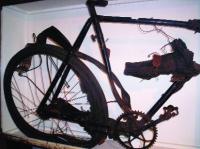 ‘became responsible for personnel, organisation and finance . . . I evolved the whole details of the sabotage campaign [the S-plan] . . . conducted the entire training of cadre units, was responsible for all but locally-derived intelligence, carried out small pieces of research and, in general, controlled the whole explosives and munitions end’.
‘became responsible for personnel, organisation and finance . . . I evolved the whole details of the sabotage campaign [the S-plan] . . . conducted the entire training of cadre units, was responsible for all but locally-derived intelligence, carried out small pieces of research and, in general, controlled the whole explosives and munitions end’.
O’Donovan’s elder son, Donal, had misgivings about his father’s decision to re-enlist with the IRA in 1938, at the age of 41. But James O’Donovan himself never expressed any regrets about his role in the English bombing campaign, which resulted in the deaths of seven members of the public, scores of serious injuries, and the execution of two IRA volunteers in February 1940.
The IRA declares war
The S-plan kicked off with polite formality, as might be expected from an ex-pupil of the Jesuits (O’Donovan was born in Roscommon in 1896 and educated at Glasgow’s prestigious St Aloysius College). In mid-January 1939, the British foreign secretary, Lord Halifax, received an IRA letter declaring war, which began ‘Your Excellency . . .’. It was typical of O’Donovan to issue a deadly threat cloaked in formal terms.
The ultimatum gave the British government four days to withdraw troops from Northern Ireland—an impossible deadline to meet. In fact, however, the S-plan had nothing to do with forcing a British withdrawal from the North, and everything to do with attracting the attention of the Germans. Russell saw Hitler as the only European leader capable of destroying Britain. His logic was that with England on her knees, nothing could prevent a German-backed reunification of Ireland.
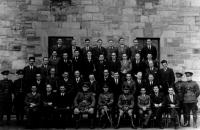
Jim O’Donovan (back row, fifth from left) at an ESB managers’ course on air-raid precautions at Griffith Barracks, Dublin, mid-January 1939, and (inset) at the Bridewell, Dublin, following his arrest on 26 September 1941. Despite being on the state payroll and having a young family, O’Donovan did not hesitate to accept Seán Russell’s call to arms in August 1938. (National Library of Ireland and Irish Military Archives)
Abwehr makes contact; O’Donovan dispatched to Germany
As a wave of IRA bombs exploded across English cities on 16 January 1939, it didn’t take the Abwehr long to act. In early February it dispatched one of its agents, Oscar Pfaus, to Dublin to meet the IRA leadership. O’Donovan recalled that on 3 February the German agent ‘met Seán Russell and myself in Pete’s [Kearney] house in Clontarf. He explained that his principals would be glad to meet a representative from us and discuss the possibility of assistance . . .’.
This was an offer the IRA leaders could not refuse. Having been entrusted by Russell to reciprocate Oscar Pfaus’s visit, O’Donovan set off for Hamburg with his wife Monty, a sister of the republican martyr Kevin Barry. The ground-breaking IRA–Abwehr talks continued at various addresses in the city, and O’Donovan recalled that ‘we discussed many matters of common interest’. The Abwehr team was led by the head of its Hamburg
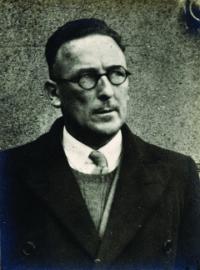 office, Friedrich Carl Marwede (who used the cover name Pfalzgraf). O’Donovan recalled:
office, Friedrich Carl Marwede (who used the cover name Pfalzgraf). O’Donovan recalled:
‘I dealt with the whole IRA position as given to me by Seán Russell. I passed on in good faith what events proved to be a very roseate appraisal of their strength in personnel and equipment, and their prospects as an organisation.’
It was agreed that the Germans could summon to Germany by writing to him, in code, at ‘Florenceville’, the ESB manager’s lavish Shankill home set in 1.5 acres of gardens. In addition, the Germans supplied the IRA emissary with radio transmission ciphers, coded letters ‘to convey important elementary messages’ and a list of Abwehr agents’ names and addresses.
But with no immediate prospect of money from Germany to sustain the bombing campaign in England, the IRA decided to send Seán Russell on a fund-raising trip to America, where he would liaise with Joe McGarrity, the powerful leader of the Clan na Gael organisation. Stephen Hayes from Wexford was appointed to take over as the new chief-of-staff.
O’Donovan’s second and third visits to Nazi Germany
On 24 April 1939 Jim O’Donovan set off for Hamburg again. Arranging ten days’ holiday from his ESB job, O’Donovan caught the liner New York at Cobh on Monday 24 April 1939. According to historian J. Bowyer Bell, the visit was ‘to discuss potential agents, the supply of arms in the event of war, radio sets and courier communication. The only firm result was a courier route between Brussels and London using an exiledBreton’. O’Donovan’s memoirs disclose that the Breton was Paul Moyse, whom O’Donovan later met (on Sunday 21 May 1939) when he visited the Belgian capital to collect Abwehr radio codes. Meanwhile, the S-plan continued unabated. In May alone there were over 40 IRA incendiary, tear-gas and bomb attacks in thirteen English towns and cities.
O’Donovan’s final visit to Nazi Germany occurred in late summer 1939, when he and his wife boarded the liner Washington in Cobh on Friday 18 August. The ship had sailed from New York and it was hardly a coincidence that the head of Clan na Gael, Joe McGarrity, was also on board. In fact, both men were scheduled to meet senior Abwehr agents in Berlin.
Jim and Monty stayed at the exclusive Rüssischer Hof hotel. O’Donovan initially met with two Abwehr agents called Neumeister and Schwendy. As his memoirs reveal, O’Donovan saw himself as a ‘plenipotentiary’ with ‘plenary powers’ to negotiate with Hitler’s regime on behalf of the ‘government and people of the republic ofIreland’. At a city apartment they were joined by other Abwehr agents, and O’Donovan noted that their ‘sympathy with my objectives was obvious and sincere’. Later on, Neumeister sounded him out ‘as to England’s probable reactions in the event of war’. For three hours O’Donovan faced a continual ‘bombardment of questions’ from the German agents, whose faces appeared ‘strained and flushed’.
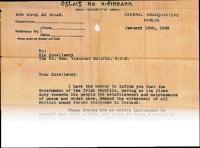
The formality of the IRA’s ‘declaration of war’ on the British was typical of the Jesuit-educated O’Donovan.
In 1946, Kurt Haller (a German Foreign Office liaison officer with the Abwehr) told MI5 that at the meetings in Neumeister’s Berlin flat O’Donovan
‘. . . again asked for German support for the occupation of Northern Ireland, while Marwede requested concentration, for the time being, on smaller military targets in Northern Ireland and Great Britain. The Germans tried to stall O’Donovan over Northern Ireland, but did not refuse point-blank, nor did O’Donovan altogether refuse IRA participation in attacks on military targets, but no real agreement was reached on this fundamentalpoint. A large part of the discussions dealt with technical details. It transpired that O’Donovan was ordnance officer and QMG [quartermaster general] of the IRA and seemed most interested in obtaining delivery of weapons, ammunition and explosives.’
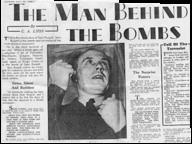
A Sunday Express exposé of Seán Russell on 30 July 1939. Jim O’Donovan was not publicly linked to the bombing campaign until 1961, the year before he retired from the ESB. (National Library of Ireland)
Three days after returning to Dublin, Jim O’Donovan was able to watch from the safety of his ESB office as the tragic events unfolded in Coventry. On Friday 25 August, an IRA bicycle bomb exploded in the West Midlands city, killing five people and injuring 72.
Seán Russell and Frank Ryan
The outbreak of war just over a week later put paid to the seven-point Berlin pact agreed between Jim O’Donovan and Major Marwede. The German arms, ammunition and explosives were never delivered, but money was sent via various agents. Thirteen German agents were sent to Ireland in the 1939–43 period. The radio link was up and running in October, and the courier service was also used.
A year later, Seán Russell was in Berlin for talks with top members of the Nazi regime. On 4 August 1940 the Abwehr reported that Frank Ryan had arrived in Berlin (having been
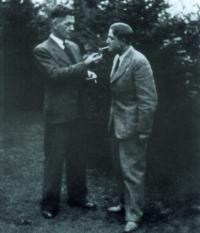
Frank Ryan (left) in Germany with Abwehr agent Helmut Clissmann, who engineered his release from Spanish custody. Before the war Clissmann ran the German academic exchange service in Dublin. A post-war MI5 file records that in August 1942 Frank Ryan ‘is said to have been received by Hitler’.
released from prison in northern Spain
shortly before). The following day, unknown to Ryan, a conference was held by Foreign Minister Joachim von Ribbentrop, which was attended by Abwehr chief Admiral Wilhelm Canaris, his deputy Erwin von Lahousen,
Edmund Veesenmayer (Ribbentrop’s coup d’état specialist) and Seán Russell, representing the IRA. On 7 August Russell and Ryan were to sail from Wilhelmshaven on a U-boat bound for Ireland. But the mission was called off when Russell died aboard the vessel.
Lahousen told MI5 interrogators in 1946 that ‘Canaris contemptuously referred to Russell as the “music professor”’. Kurt Haller told MI5 that at the Berlin meetings Seán Russell had ‘for the first time . . . mentioned the potential strength of the IRA (including sympathisers) which he gave as 5,000–10,000 men. This figure was far below German expectations’. According to Haller, ‘the German motive for sending Ryan [to Ireland] was that Russell, throughout his stay in Germany, had shown considerable reticence towards the Germans and plainly did not regard himself as a German agent’. Haller added: ‘By sending Ryan, Abwehr II felt that their own interests would be better safeguarded, as Ryan accepted more easily his position as a German agent’.
Frank Ryan remained on in Germany (until his death in a Dresden sanatorium in 1944) and, according to MI5 files, Veesenmayer had already decided to use Ryan as Russell’s successor in ‘an auxiliary offensive operation against Great Britain’. Under the German plan, Ryan was
‘to approach the Irish govt. and suggest that the German invasion of Britain would be an opportune moment for the seizure of Northern Ireland . . . German support [would be] assured, but the Germans would act only after de Valera had committed himself. Ryan had told Veesenmayer that de Valera would support such a plan as this, provided he considered it a legitimate risk to take.’
A post-war MI5 file records that in August 1942 Frank Ryan ‘is said to have been received by Hitler’. But by then Ireland was on Berlin’s back-burner, as the year-old campaign against the USSR was foundering.
While the Nazis saw the IRA as useful allies should the Wehrmacht invade Britain in 1940, the IRA saw Germany as a stepping stone to a united Ireland. But did Seán Russell, Jim O’Donovan or Frank Ryan ever stop to consider that, had their plan succeeded, the reunited country would amount to nothing more than a puppet state? O’Donovan certainly didn’t, claiming that a victorious Nazi Germany ‘would have been very generous indeed’ to Ireland, which ‘at last would become a place worth living in’. HI
David O’Donoghue’s The devil’s deal: the IRA, Nazi Germany and the double life of Jim O’Donovan was published recently by New Island.
Further reading:
UK National Archives, MI5 files: KV 2/769 (1946 interrogations of Kurt Haller and Erwin von Lahousen); and KV 2/1292 (note on Frank Ryan, 1945).


















